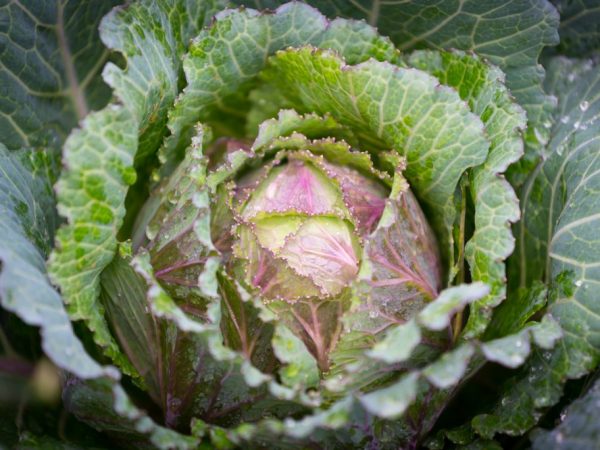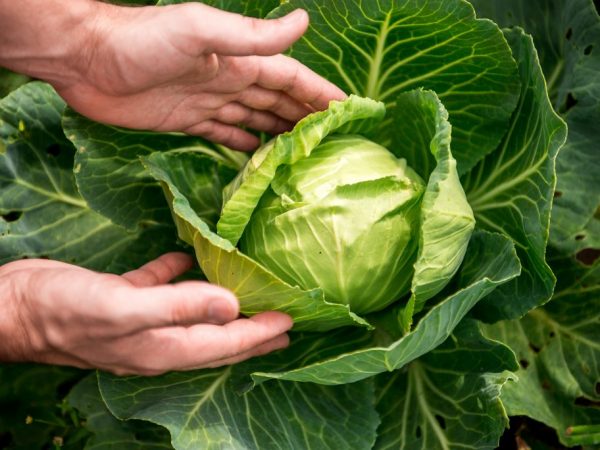How cabbage reacts to frost
Throughout the year, white cabbage is eaten fresh or sauerkraut, used in many dishes. It is not surprising that gardeners cannot imagine a vegetable garden without this vegetable. Cabbage and frost is a combination that can both strengthen and kill a culture.

How cabbage reacts to frost
Features of the growth of cabbage
Cabbage grows best at temperatures between 15 ° C and 20 ° C. It requires a lot of moisture both in the soil and in the air. Seedlings retain their properties even when frozen, but only after hardening. For young bushes, this moment is key in terms of survival.
The hardened seedlings can withstand the cold temperatures that are typical for May nights without any problems. With the correct procedure, the plant is not afraid of cold temperatures down to -3 ° C or slightly lower. Unseasoned seedlings are usually grown in greenhouses. It is sensitive to even the smallest drop in temperature, so a good harvest cannot be expected.
In difficult weather conditions, a certain number of bushes die, but really strong shoots become even stronger. In greenhouse conditions, there is a high risk of losing seedlings, therefore, in regions with regular spring frosts, it is better to choose varieties with a later planting in the ground.
Tempering principles
Tempering is the most important nuance when growing cabbage. This procedure should not be neglected if the goal is good heads of cabbage. The essence of the process is to prepare fragile, only germinated plants for planting.
Quenching is performed as follows:
- During germination, the temperature should be 18 ° C-20 ° C, but with the appearance of the first shoots, it is reduced to 15 ° C-17 ° C during the day and 8 ° C-10 ° C at night. This allows you to prevent both the death of seedlings due to frost and the pulling of seedlings.
- 10 days before transplanting into open ground, the vegetable begins to be accustomed to fresh air. To do this, first open the window for 3-4 hours a day, then regularly take out the seedlings to fresh air. In private houses, a courtyard is suitable for this purpose, in apartments - a balcony.
- 4 days before planting, the plant is taken out of a warm room, reducing watering. They also make sure that the earth does not dry out.
Such manipulations allow you to get seedlings that are not afraid of temporary frosts. If in the early stages the bushes did not receive too much light or even shaded, they will not be too sensitive to cloudy weather and lack of sun. Without over-watering, the plant will be tolerant to dry conditions.
Tempering is insurance in case of unfavorable weather, including frost. Prepared seedlings yield a good harvest over time.
Influence of temperature conditions

Cabbage withstands freezing well
The optimum temperature for the growing period of cabbage is 12 ° C-24 ° C. At 12 ° C-17 ° C, good seedlings grow, but an increase to 31 ° C disfigures the leaves. At the time of planting in the ground, the bush should have a good root system and 5-6 leaves.
Unhardened seedlings die at 3 ° С, hardened ones withstand -3 ° С-5 ° С. True, the yield in this case becomes somewhat lower.Even hardened cabbage dies in cold weather at temperatures below -10 ° C.
At the stage of technical ripeness, the head of cabbage is not afraid of frosts down to -5 ° С-7 ° С. Mature plants can withstand temperatures as low as -8 ° C. Late-ripening varieties are more resistant to cold (by 1 ° С-2 ° С). During adaptation, a temperature of 3 ° C-10 ° C increases the characteristics of the plant in terms of frost resistance, and hot weather slows down the growth and formation of the head. Watering plentifully can help.
Planting dates depend on the variety of cabbage. To get a good harvest, you need to plant:
- early varieties - between April 25 and May 5;
- mid-late and mid-season - in the third decade of May;
- late - from the end of May to 5 June.
The characteristics of the variety are also taken into account when calculating the planting density.
Cauliflower and frost
Cauliflower is light-loving and cold-resistant. In a form adapted to open air, adult seedlings withstand a short-term temperature drop down to -4 ° C-5 ° C. If the cooling is prolonged, the leaves acquire a purple hue, the growth of the vegetable slows down significantly.
In early cabbage, the heads can no longer withstand -2 ° C-3 ° C, for late cabbage, cold to -5 ° C is destructive.
Temperature conditions also affect head formation. At 21 ° C it takes 10-12 days, and at 13 ° C-15 ° C - 21-23 days. In conditions of 4 ° C-5 ° C, there is practically no increase. Low temperatures have a more depressing effect on the plant than high temperatures.
Summarizing
Cabbage is able to retain its properties in the cold. This applies to both seedlings and heads of cabbage. However, for this it is necessary to create all conditions in terms of lighting and watering, fertilizing the soil and preparing the plant itself.


